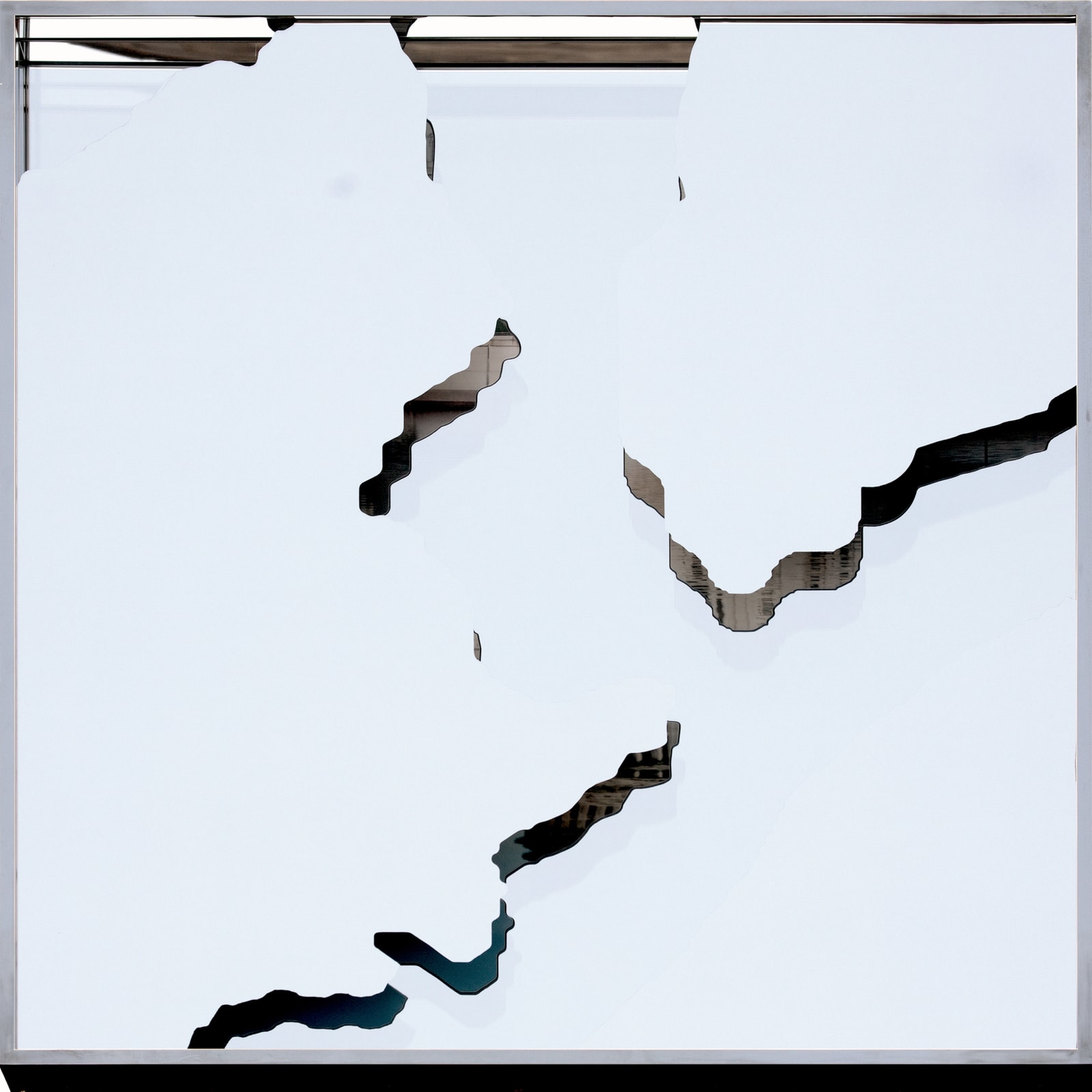
WANG Ningde
“负光Negative Light”系列 Series
镜像作品-模仿理论中,与影子异曲同工的由来——即对事物的描摹。但它们又有区分:根据清晰程度,艺术作品注定更受镜子范式的制约。
Theories of mirror and imitation are similar to theories of shadows, all relate to the description of things. But they differ in terms of clarity, as art is destined to be more constrained by the mirror paradigm.
“负光”系列由两部分构成:《无限填充Infinite Fill》与《反转Reversal》。镜面和影子组成了《无限填充》。这里的影子不附属于实物,它们由艺术家彼时在博物馆拍摄,此刻存在于镜面这一直白的二维世界。可以说它们是由艺术家选择的艺术史、文明史的影子。《反转》则将影子用银箔提示,剩余图像用感光乳剂覆盖,这些图像取自艺术家穿越美国的旅行快照。《反转》令人联想起杜尚向公共出售的黑色侧面轮廓像,以反逻辑绘画/摄影的姿态,展现了一门颠倒的技术。
The “Negative Light” series comprises two groups of works: Infinite Fill and Reversal. Mirror and shadow form Infinite Fill – here, shadows are not attached to the real objects that cast them. Photographed by the artist in museums, they now exist in the perpetually white two-dimensional world of mirrors as shadows of art history and civilization selected by the artist. In Reversal, shadows are hinted at with silver foil, while images are covered up with photographic emulsion taken from snapshots of the artist’s travels across the United States. Reminiscent of Duchamp’s self-portraits in profile, Reversal presents a reversal of technique, inverting the logic of painting and photography.
再现辩证法已经告诉我们,侧面和镜子构成了自我与他者之间关系的象征形式。以古典主义的视角来看,尤其是在纳西索斯(Narcissus)的情境中,(水中的)影子是一个绝对的“他者”。
The dialectics of representation tell us that the profile and the mirror constitute a symbolic form which represents the relationship between the self and the other. From a classical point of view, especially in the context of Narcissus, the shadow (in the water) is an absolute "other".
“负光”中的两组作品,既彼此互文,也相互对抗。受历史与地源政治影响的影子,徒留于此,向我们抛出了如下疑问:出走的是文明本身,还是她们的影子?揽镜自窥,究竟谁是他者?
The two groups of works in “Negative Light” are intertextual and antagonistic to each other. Shadows, influenced by history and geopolitics, remain here. They ask the viewer if they are witnessing civilization itself or its shadows? Looking in the mirror, who is the other?